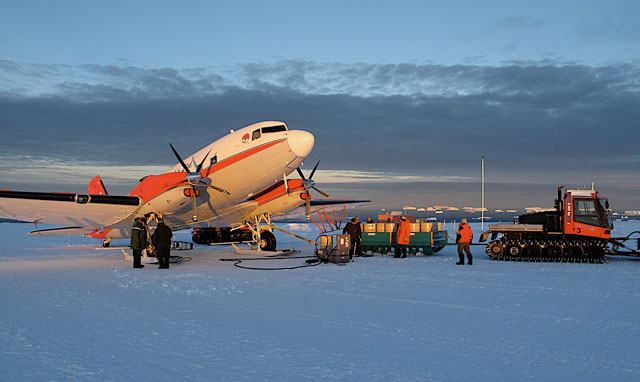Capped offGeophysical survey reveals giant fjords under East Antarctic Ice SheetPosted June 24, 2011
A new topographical map of the bedrock below Antarctica’s biggest ice sheet has revealed some of the largest fjords, or ice cut channels, on Earth. The findings should provide important insights into the history of ice in Antarctica, as well as improve computer models of how the ice sheet might behave in the future as the climate changes, according to research published in the prestigious journal Nature this month. This research is part of ICECAP (Investigating the Cryospheric Evolution of the Central Antarctic Plate) “We knew almost nothing about what was going on, or could go on, under this part of the ice sheet and now we’ve opened it up and made it real,” said Duncan Young The high-resolution topographic map is the first of the Aurora Subglacial Basin, an immense, ice-buried lowland in East Antarctica larger than Texas. “We chose to focus on the Aurora Subglacial Basin because it may represent the weak underbelly of the East Antarctic Ice Sheet, the largest remaining body of ice and potential source of sea-level rise on Earth,” said Donald Blankenship Because the basin lies well below sea level, seawater could penetrate beneath the ice, causing portions of the ice sheet to collapse and float off to sea. In fact, the research showed that the ice sheet has been significantly smaller in the past. Previous work based on ocean sediments and computer models indicates the East Antarctic Ice Sheet grew and shrank widely and frequently, from about 34 to 14 million years ago, causing sea level to fluctuate by about 60 meters. Since then, it has been comparatively stable, causing sea-level fluctuations of less than 15 meters. The new map reveals vast channels cut through mountain ranges by ancient glaciers that mark the edge of the ice sheet at different times in the past, sometimes hundreds of kilometers from its current edge. “We’re seeing what the ice sheet looked like at a time when Earth was much warmer than today,” Young said. “Back then it was very dynamic, with significant surface melting. Recently, the ice sheet has been better behaved.” However, recent lowering of major glaciers near the edge detected by satellites has raised concerns about this sector of Antarctica. Young said past configurations of the ice sheet give a sense of how it might look in the future, although he doesn't foresee it shrinking as dramatically in the next 100 years. Still, even a small change in this massive ice sheet could have a significant effect on sea level. Scientists at The University of Texas at Austin’s Institute for Computational Engineering and Sciences and Australia’s Antarctic Climate and Ecosystems CRC are developing models that will use the new map to forecast how the ice sheet will evolve in the future and how it might affect sea level.
NSF-funded research in this story: Donald Blankenship, Ian Dalziel, Lawrence Lawver and Jack Holt, University of Texas at Austin, Award No. 0733025
|



For USAP Participants |
For The Public |
For Researchers and EducatorsContact UsU.S. National Science FoundationOffice of Polar Programs Geosciences Directorate 2415 Eisenhower Avenue, Suite W7100 Alexandria, VA 22314 Sign up for the NSF Office of Polar Programs newsletter and events. Feedback Form |




